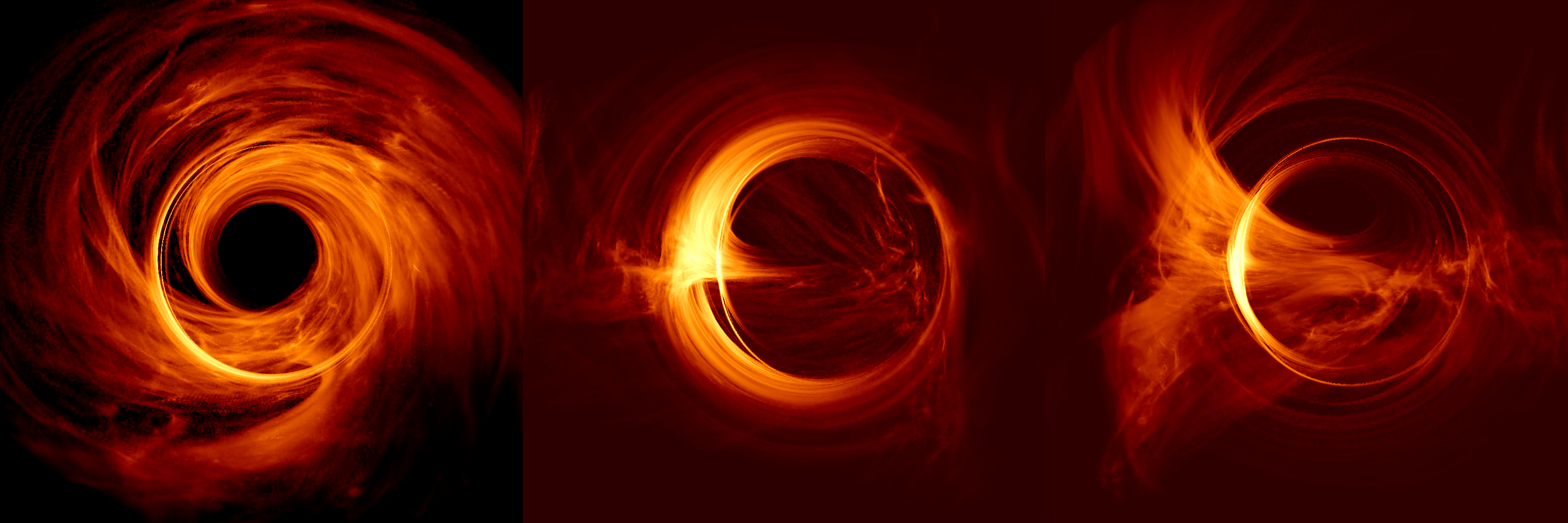Emission from the hot plasma near a supermassive black hole produces distinct images and visual features, including a "photon ring" due to strong gravitational lensing. At the same time, this emission also varies significantly in time, and can flare up to high energy on short timescales. Magnetic flux eruption events can cause changes in the brightness of the photon ring. Here, general relativistic magnetohydrodynamical (GRMHD) simulations of accretion disks are ray-traced to produce mock images, revealing how horizon-scale imaging could detect flux eruption events. Each of the three images shows brightness temperature, from 100 million (black) to 100 billion (white) degrees Kelvin.
Methods: HAMR code





